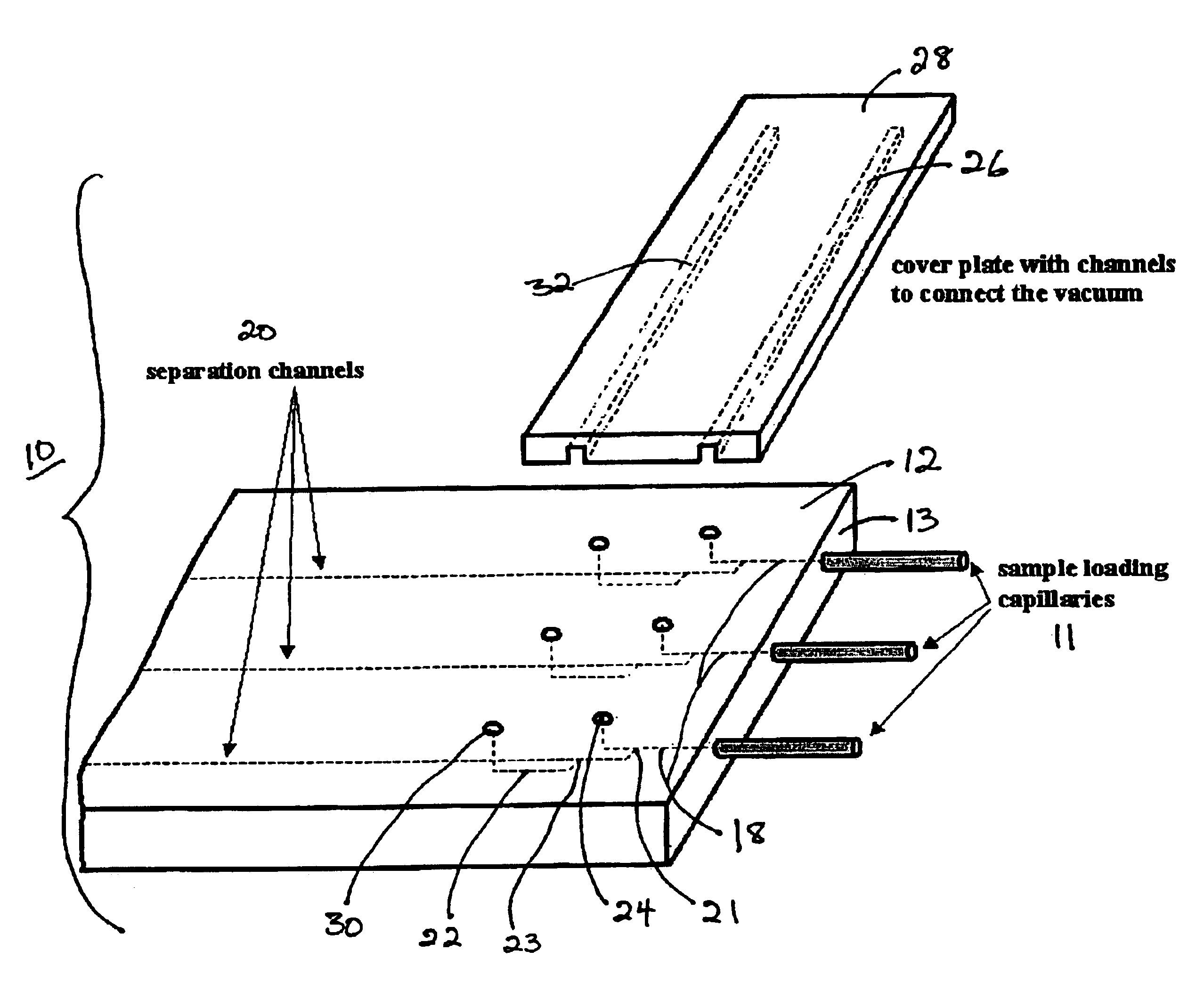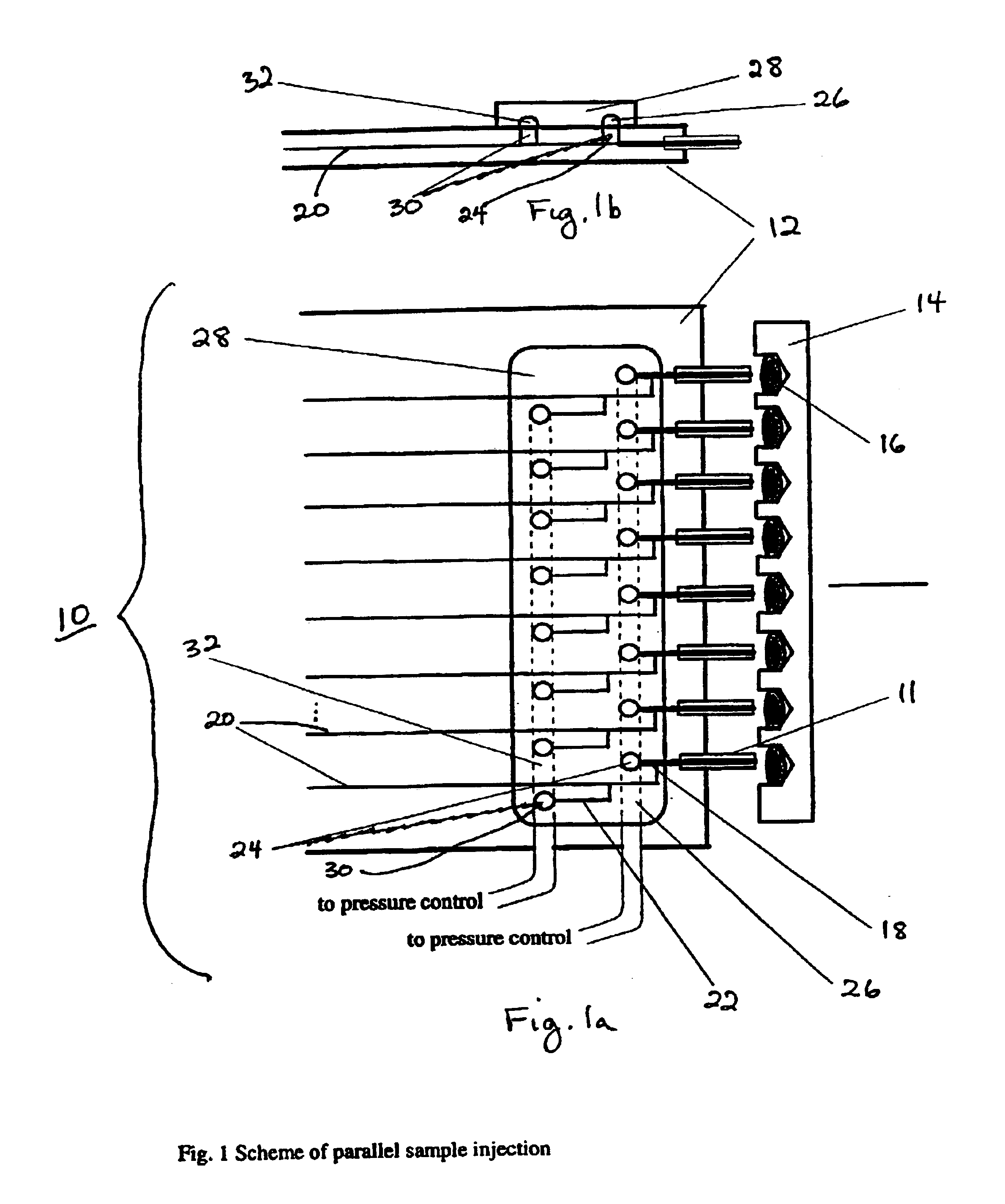Parallel sample loading and injection device for multichannel microfluidic devices
a microfluidic device and sample technology, applied in the direction of fluid pressure measurement, liquid/fluent solid measurement, peptide measurement, etc., can solve the problems of difficult to achieve, less developed methods for moving small quantities of samples from a sample vial or holder onto a chip or directly to an analytical device without evaporation or dilution, etc., and achieves high surface area
- Summary
- Abstract
- Description
- Claims
- Application Information
AI Technical Summary
Benefits of technology
Problems solved by technology
Method used
Image
Examples
Embodiment Construction
[0022]The parallel sample load and injection device of the invention allows for a simple automated way of transferring samples from a standard, e.g., 96-well, microtiter plate into a microfluidic device and for the simultaneous or subsequent injection of samples into multiple channels on the device.
[0023]Referring to FIGS. 1a-3, a sample load and injection device (10) includes parallel sample introduction capillaries (11) that are attached to a microfluidic device (12) into which the sample load and injection device of the invention is integrated. The spacing between these capillaries is compatible with the spacing of the wells in standard microtiter plates (14). As indicated in FIG. 3, individual sample introduction capillaries (11) may contain packing material (15) for sample pretreatment.
[0024]Sample solutions in individual wells (16) are transferred through introduction capillaries (11) into introduction channels (18) in the sample load and injection device. Each of the sample i...
PUM
| Property | Measurement | Unit |
|---|---|---|
| pressure | aaaaa | aaaaa |
| electric field | aaaaa | aaaaa |
| internal diameter | aaaaa | aaaaa |
Abstract
Description
Claims
Application Information
 Login to View More
Login to View More - R&D
- Intellectual Property
- Life Sciences
- Materials
- Tech Scout
- Unparalleled Data Quality
- Higher Quality Content
- 60% Fewer Hallucinations
Browse by: Latest US Patents, China's latest patents, Technical Efficacy Thesaurus, Application Domain, Technology Topic, Popular Technical Reports.
© 2025 PatSnap. All rights reserved.Legal|Privacy policy|Modern Slavery Act Transparency Statement|Sitemap|About US| Contact US: help@patsnap.com



